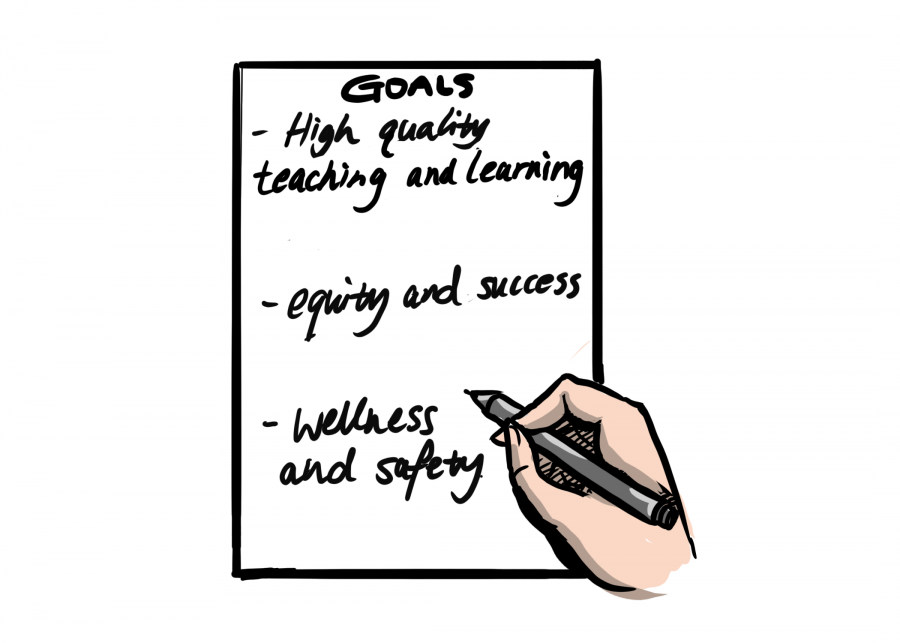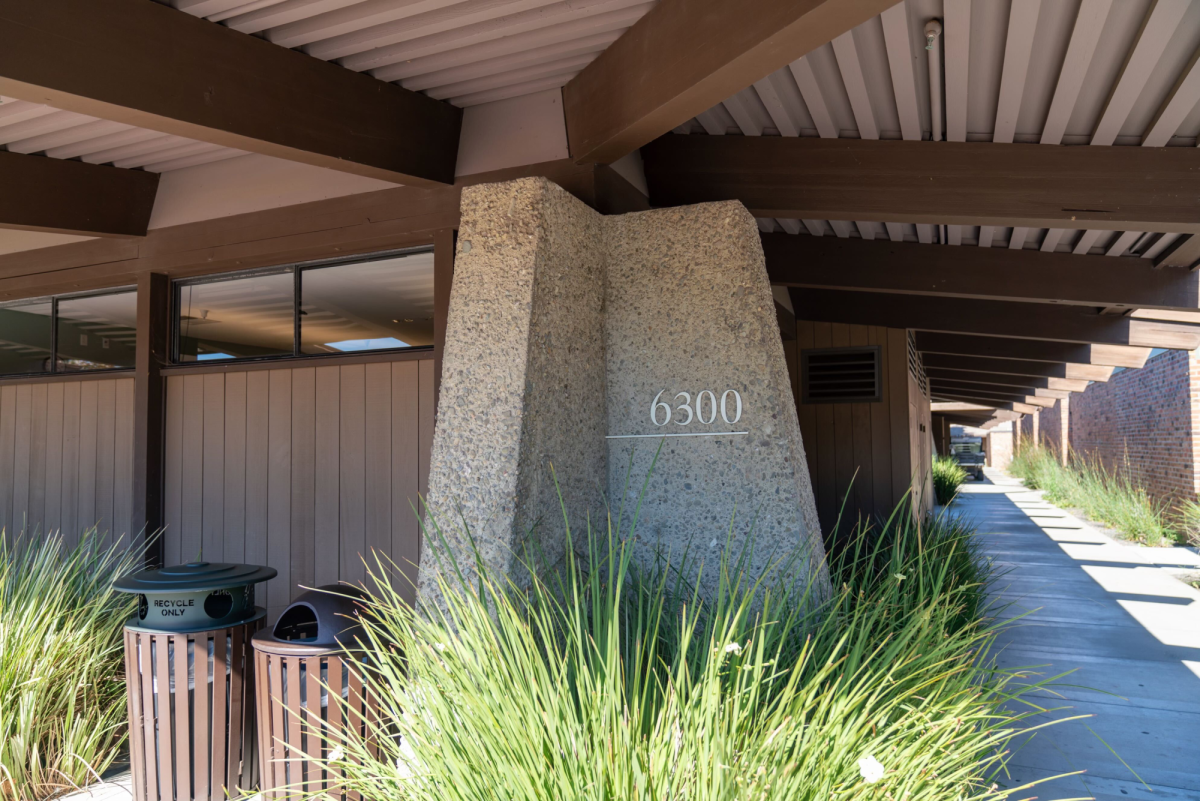Written by Caroline Ro
The Board of Education’s Aug. 8 special meeting included a discussion of a draft of Palo Alto Unified School District (PAUSD)’s goals for the 2017-18 school year. The goals themselves are fairly theoretical: their passing would bring them up for further discussion in order to eventually spell out their details and enact them. The draft lists potential goals under three main sections: high quality teaching and learning, equity and access and wellness and safety. While the meeting brought to attention many ways the draft could be amended before the final vote, many of the goals that could have a direct impact on Gunn were discussed and cemented.
The first set of goals for high quality teaching and learning includes plans to change the curriculum and learning experiences for PAUSD students, as well as work towards developments in tracking the progress and efficacy of such changes. Curriculum changes that would directly affect students on campus include the combination of the Algebra 1 and 1A lanes (at Gunn exclusively) and the launching of a new computer science curriculum for K-12 students in the fall of 2019. This curriculum would also open up discussion on whether or not computer science courses should be listed as a graduation requirement in the future. Another major project discussed at the meeting was the development of a new set of cross-disciplinary, inquiry-driven programs and classes by the district’s high school learning design team. Very little about this project, however, has been decided upon among the board members and is still regarded with a degree of caution, considering how time-consuming such a project would be.
Several members also spoke in favor of developing a plan to address the recommendations gathered from the Special Education Program Review Report. This plan would ideally help accommodate students who do not have 504 or Individualized Education Program, programs that provide accommodations and modifications for students with learning and attention issues so that they can participate in general education curriculum. It creates a transparent and prompt identification process for these students to receive the help they need. In order to measure the effects of these new additions, the Board has proposed adopting California’s new Local Control and Accountability Plan (LCAP) online dashboard, which uses data to rate schools on their performance on specific goals, such as chronic absenteeism, suspension rates, graduation rates and college preparedness for different demographics. The ratings go from red (the lowest) to orange, yellow, green and blue; as of now, several of PAUSD’s ratings stand in the yellow and orange region. At the Aug. 8 meeting, several board members proposed to focus on bringing all measured areas on the LCAP dashboard to either green or blue status this year, all the while customizing certain sections to reflect the local, PAUSD-specific areas of improvement based off of data from the California Healthy Kids Survey.
As of now, some developments being considered by the minority and talent development Advisory Committee (MATD) and the board include increasing the number and involvement of parent liaisons, providing expert tutoring through the district and its partners, professional training for staff on serving HUR students and families as well as providing more “response to intervention” support and monitoring, which aims to counter academic and behavioral failure through frequent monitoring and early intervention. Other than the equity plan, the equity and access section of the board goals suggests encouraging the involvement of HUR families in their student’s academic successes through methods such as shadowing or student meetings.
The final clause of this section aims to build a staff of high quality, diverse teachers by making it easier for different people to work in the district. Factors such as particularly high housing prices or child and elder care can make it more difficult for many staff members to continue working in PAUSD, and the implementation of this plan would seek to ease the burden of housing costs and the difficulty of funding child and elder care. Steps like these would not only help the teachers throughout the district, but bene t students as well by building a more representative—and possibly more culturally-sensitive—workforce of teachers. Most importantly, having a more diverse staff would allow students to relate more closely to adult role models at school. It would also help students to feel more connected on campus, “especially HURs who have HUR staff members, for example… it would be a good thing to see,” School Board Representative senior Advait Arun said.
The third and last section of the board’s draft focused on wellness and safety, especially on alleviating student stress and implementing feedback on staff wellness. On Aug. 8, the board expressed that they would likely continue expanding upon the development and implementation of the Social-Emotional Learning curriculum throughout the school year. They hope that the implementation of this data would result in improved metrics student surveys on how connected they felt at school or whether or not they had identified a caring adult on campus they could trust.
In order to reduce student stress levels and ensure that assigned homework was productive, a test and project stacking monitoring system was suggested so that teachers could contextualize the workloads that they were giving to their students.
The wellness and safety section, however, did not solely focus on students. To ensure the wellness of staff members as well, the board hopes to implement changes in the staff climate and culture through recommendations and data collected in the 2016-17 staff wellness survey. As mentioned in the equity and access section, many of these recommendations had to do with housing issues and elder care, which board members expressed a need to address this year.





















